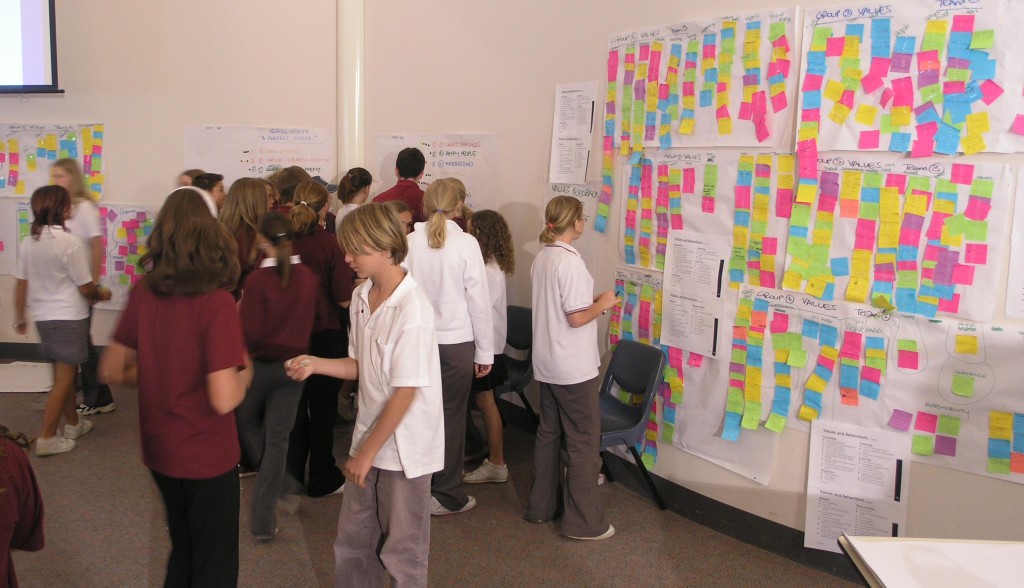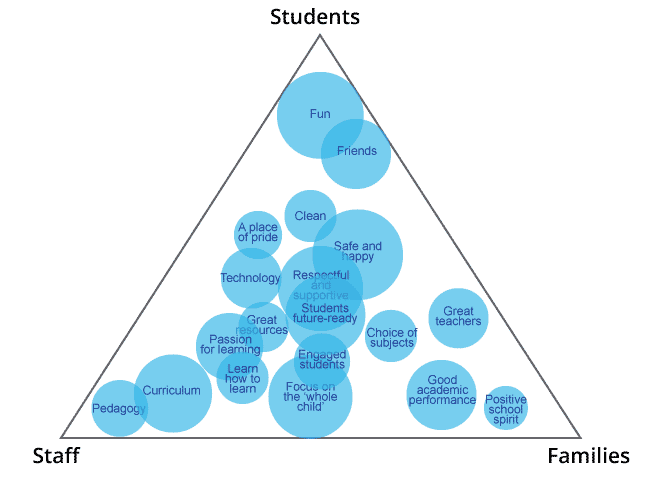Students, teachers and families usually have different perspectives regarding the purpose and vision for their school.
Over the years, we worked with families, staff and students at dozens of schools, to identify their aspirations and agree the purpose and vision for their school. This builds a shared direction, ownership and commitment to the school. It also provides a point of reference to inform planning and decision-making into the future.
The process usually involves working with each group to identify and prioritise their views on the elements that comprise purpose and desired vision for the school.

Every school is unique. Consequently, the stated purpose and vision tend to be unique to each school. There are common themes too.
Common themes
A review of data from several Australian schools, with whom we have worked, reveals the following common themes: identified by families, students and staff. (These schools represented a mix of primary and secondary schools across four states and territories.)
- A place of pride
- Choice of subjects
- Clean
- Curriculum
- Engaged students
- Focus on the ‘whole child’
- Friends
- Fun
- Good academic results
- Great resources
- Great teachers
- Passion for learning
- Pedagogy
- Positive school spirit
- Respectful and supportive
- Safe and happy
- Students future ready
- Students learn how to learn
- Technology
The majority of schools referred to each of these themes. The wording, expression or nuance may have varied from school to school, but in essence these themes were common.
Different Perspectives
Of particular interest is the degree to which each stakeholder group raises these themes. Some themes, such as Safe and happy, Respectful and supportive and Students future ready are referred to by all three stakeholder groups in roughly equal measure. Other items tend to be raised by only one group. Typically only students identify Fun and Friends as being important elements of their schooling. Similarly, only teachers tend to raise Curriculum and Pedagogy. Other themes are raised by two of the three groups. Students and parents want Great teachers, though the teachers tended not to mention this. Staff and parents want Engaged students, while students tend not to identify this.
The figure below illustrates these different perspectives. Each item is represented by a bubble, the size of which indicates the frequency with which the item is raised; the bigger the bubble the more commonly it is mentioned. The closer the bubble is to one of the three corners (Students, Staff or Parents), the stronger that stakeholder expression of that item. For example, that only students mention Fun is indicated by it being tight in the Students’ corner. Alternatively, Respectful and supportive sits in the centre of the triangle, indicating it was identified by students, staff and parents in equal proportion.
Key messages
We believe these finding illustrate two important points.
Firstly, they highlight the importance of taking the time to find out the perspectives of each stakeholder group, directly from that stakeholder group. Attempts to second-guess the perspective of another group are very likely to completely miss entire themes held dear to that group. Involving each stakeholder group in the development of a shared direction or System Map is a great way to start.
Secondly, there are many points of commonality among these stakeholders, which provide the basis for agreement. Each group mentioned most themes, at least to some degree. This commonality provides a starting point for generating and documenting a shared perspective that is agreeable to all stakeholder groups. Furthermore, once the unique perspectives of individual groups are identified these can be discussed and are frequently incorporated into the new shared perspective.
Discussion
What are the common views among your stakeholders? What are the differences? How do you know? How do you manage the difference?

